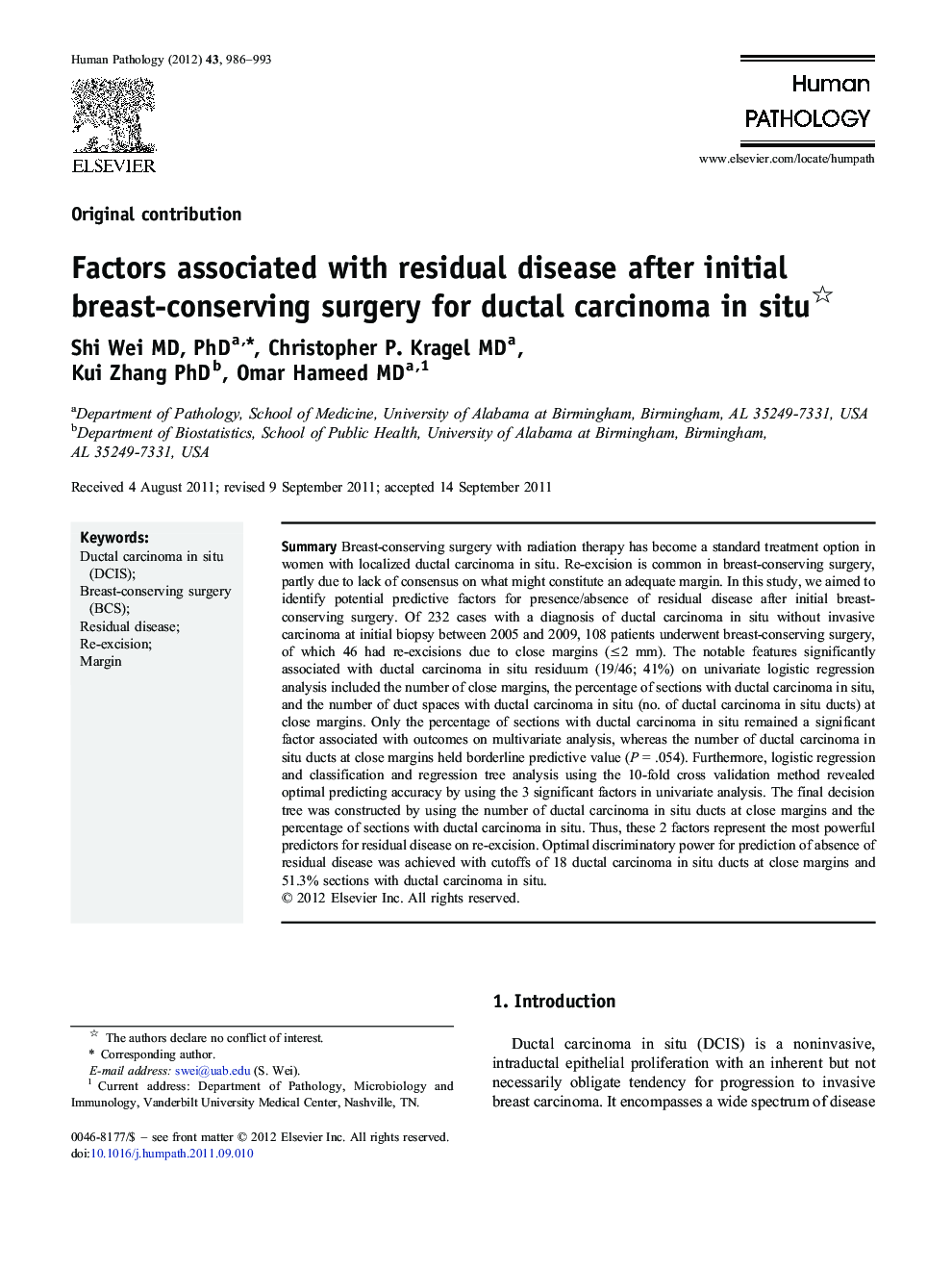| کد مقاله | کد نشریه | سال انتشار | مقاله انگلیسی | نسخه تمام متن |
|---|---|---|---|---|
| 4133481 | 1271420 | 2012 | 8 صفحه PDF | دانلود رایگان |

SummaryBreast-conserving surgery with radiation therapy has become a standard treatment option in women with localized ductal carcinoma in situ. Re-excision is common in breast-conserving surgery, partly due to lack of consensus on what might constitute an adequate margin. In this study, we aimed to identify potential predictive factors for presence/absence of residual disease after initial breast-conserving surgery. Of 232 cases with a diagnosis of ductal carcinoma in situ without invasive carcinoma at initial biopsy between 2005 and 2009, 108 patients underwent breast-conserving surgery, of which 46 had re-excisions due to close margins (≤2 mm). The notable features significantly associated with ductal carcinoma in situ residuum (19/46; 41%) on univariate logistic regression analysis included the number of close margins, the percentage of sections with ductal carcinoma in situ, and the number of duct spaces with ductal carcinoma in situ (no. of ductal carcinoma in situ ducts) at close margins. Only the percentage of sections with ductal carcinoma in situ remained a significant factor associated with outcomes on multivariate analysis, whereas the number of ductal carcinoma in situ ducts at close margins held borderline predictive value (P = .054). Furthermore, logistic regression and classification and regression tree analysis using the 10-fold cross validation method revealed optimal predicting accuracy by using the 3 significant factors in univariate analysis. The final decision tree was constructed by using the number of ductal carcinoma in situ ducts at close margins and the percentage of sections with ductal carcinoma in situ. Thus, these 2 factors represent the most powerful predictors for residual disease on re-excision. Optimal discriminatory power for prediction of absence of residual disease was achieved with cutoffs of 18 ductal carcinoma in situ ducts at close margins and 51.3% sections with ductal carcinoma in situ.
Journal: Human Pathology - Volume 43, Issue 7, July 2012, Pages 986–993